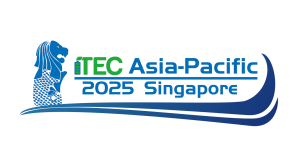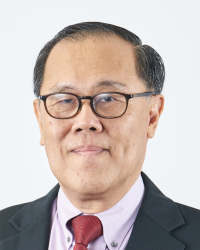
Keynote Speech 3
Empowering the Grid: AI-Driven Digital Twins, VPPs, and Consumer-Centric Energy Market
Electric power companies worldwide are accelerating investments in grid digitalization to enhance efficiency, reliability, security, affordability, and sustainability. These efforts are also unlocking new services, skillsets, and pathways for customer empowerment. However, the modern grid is becoming increasingly complex due to the integration of distributed energy resources (DERs), bidirectional power flows, and real-time control requirements. Traditional fault diagnosis and restoration methods remain reactive and struggle to scale with this growing complexity.
Digital twins, virtual replicas of physical grid systems, offer a transformative platform for predictive diagnostics, resilience planning, and the evolution of self-healing grid capabilities. When embedded with advanced AI models, such as reinforcement learning frameworks, these twins can simulate, detect, and respond to grid anomalies with high temporal and contextual precision.
In the United States, DOE-funded projects are integrating Large Language Models (LLMs) into cognitive digital twins to enhance cyber-physical resilience, enabling real-time diagnostics and secure control strategies. In China, digital twin applications in ultra-high voltage (UHV) transmission and renewable forecasting are increasingly incorporating AI modules, with future phases expected to leverage LLMs. In Singapore, SP Group and the Energy Market Authority (EMA) are deploying AI-powered Asset Twins and Network Twins to monitor asset health and simulate electric vehicle (EV) load impacts. These systems support scenario modelling and informed decision-making.
Parallel to these technological advancements, the liberalization of the electricity supply industry is reshaping consumer engagement. Businesses and households now benefit from competitive pricing, innovative retail offerings, and the ability to choose environmentally friendly energy plans. In October 2024, EMA launched a regulatory sandbox to evaluate Virtual Power Plant (VPP) technologies and business models under relaxed conditions. The first VPP, developed in collaboration with SP Group, aggregates solar and battery systems with a planned capacity of 15 MW and will participate in the electricity market to assess its impact on grid operations.
The rapid deployment of renewable-based distributed generators in residential buildings is transforming consumers into prosumers, individuals who both consume and produce electricity. Prosumers can share surplus energy with neighbours or sell it to the upstream grid, and conversely, purchase energy during shortages. To support this dynamic exchange, smart energy management services and decision-support tools, such as blockchain-based peer-to-peer trading platforms, are essential. These platforms also facilitate EV charging coordination and participation in demand response programs.
Sustainable energy sources like solar, wind, hydropower, and geothermal play a critical role in reducing greenhouse gas emissions, mitigating climate change, and improving air quality. Cleaner energy leads to healthier communities and a more liveable environment. This keynote will highlight Singapore’s strategic efforts in developing regional power grids and its ambitious initiatives to achieve net-zero emissions by 2050.
Biography

Prof. Hoay Beng Gooi received his PhD degree from The Ohio State University, Columbus, USA. He was Assistant Professor with Lafayette College, Easton, USA and Senior Engineer with EMPROS/Siemens, USA. In 1991, he joined School of EEE, Nanyang Technological University (NTU) Singapore as Senior Lecturer. He was Associate Professor of EEE and Deputy Head of EEE Power Engineering, NTU; Founding Co-Director, Singapore Power Group-NTU Joint Lab; Director of Renewable Energy, Science and Technology Master Program, a concurrent degree offered by NTU and Ecole Polytechnique (I’X), France; Programme Lead, NTU-Wuhan University Joint Education Program; and Chairman of Fundamentals of Engineering Examination (FEE) Sub-Committee for Professional Engineers Board (PEB) Singapore. He served as Committee Member of Singapore Standards Council; Founding Chair of IEEE Singapore Life Member Affinity Group; Guest Editor for Journal of Modern Power Systems and Clean Energy; and Editor of IEEE Transactions on Power Systems (T-PWRS). He won 2021 Outstanding IEEE T-PWRS Editor Award.
At NTU, he led and co-led several high-impact projects with a total grant of more than US$10M. They include developing a hardware-in-loop platform for hybrid microgrids funded by the US Navy, and an online monitoring system for switchgear for the national grid operator, Singapore Power. He spearheaded projects on solar intermittency mitigation with energy storage and blockchain-based energy trading.
He is an Emeritus Associate Professor at EEE, NTU; a registered professional engineer in Pennsylvania, USA and Singapore; and an independent microgrid consultant in Singapore; a Life Fellow of IEEE; an IEEE IES Distinguished Lecturer; and a member of IEEE Access Editorial Board; Energy Technical Committee, Institution of Engineers Singapore; and FEE (Electrical) Sub-Committee Member for PEB Singapore.